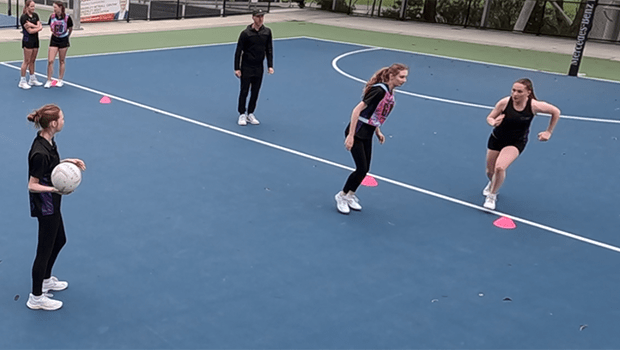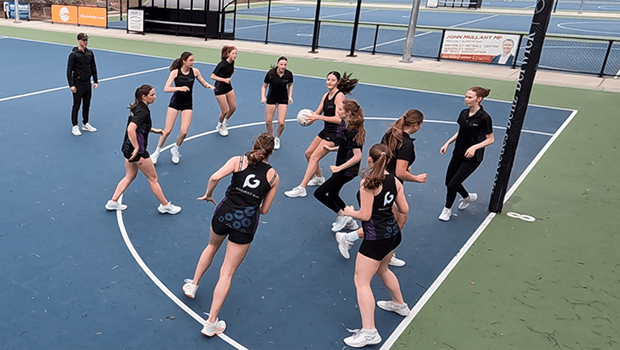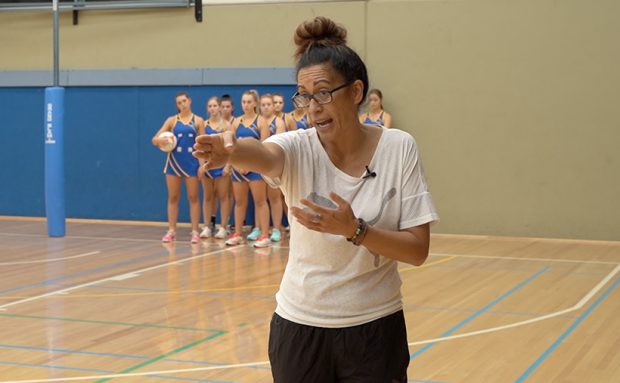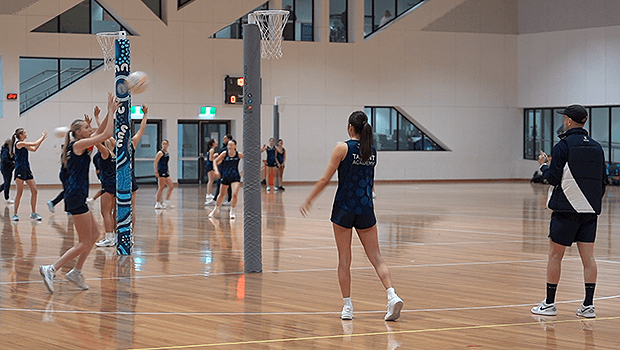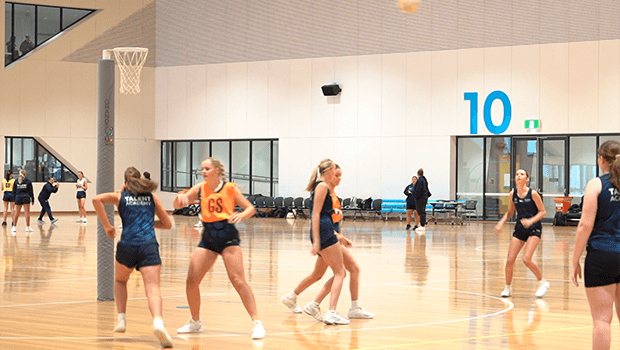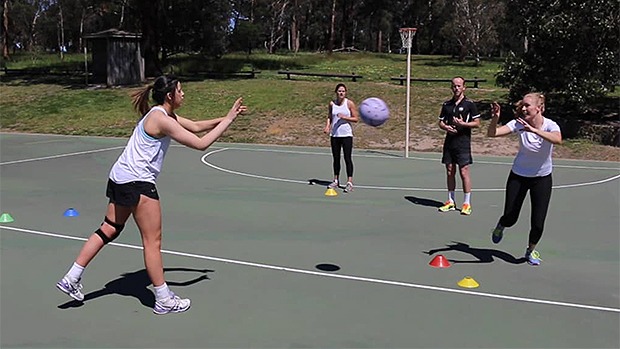
Not quite sure what to put into your weekly netball training sessions, or struggling to work out how to structure them?
Planning your sessions is a critical part of any netball coaching program. And while not everyone has the time to spend hours each week carefully crafting their session, a basic training plan or template makes it easy to quickly slot in a few drills and get things rolling.
400+ DRILLS: REGISTER HERE TO ACCESS ALL OF OUR VIDEOS!
It also makes it easier to plan ahead and progress the skills and structures learned each week, so you’re not forgetting anything and so your players are continually engaged and continually building their skills and improving as a team throughout the season.
There are countless ways to structure a training session, depending on your requirements, however for this exercise we’ve split a 90-minute session into three 30-minute blocks that cover all major areas: fitness, footwork, ball skills and team structures.
WARM-UP AND FITNESS – 30 MINUTES
Let’s get training started on the right foot. Players should be ready to go five minutes before the session starts, and to begin the session it’s a good idea to pull all players in for a quick two-minute chat. Refresh your players’ memories about some of the points you discussed after the team’s most recent game, and outline what you’ll be working on in today’s session – setting the tone for what’s to come.
Then it’s time to get warmed up.
The warm-up component should firstly include jogging, dynamic stretching, injury prevention exercises and some higher-intensity netball-specific movements or a team game/ball drill. Generally this will take around 10-15 minutes, and after a couple of weeks, once your players are into a routine, you can ask a couple of senior players to run this part of the session while you set up for the next activity.
Next, it’s a good idea to incorporate some general fitness work, i.e. some sort of timed or repetition-based running, sprinting and dynamic movements.
Fitness should be a part of every netball session, and employing it at the start of training has the added effect of forcing players to complete other parts of the session when they’re already fatigued, which is important for practising their skills and decision-making for game night, when they may start to tire in the second half.
Drills like our “Short-long sprint cycle” or “30-second sprint recovery” are a quick and easy way to get some fitness work done without taking up a huge chunk of your session.
FOOTWORK AND BALL SKILLS – 30 MINUTES
With your players now well and truly warmed up, it’s time to move onto arguably the most important part of the session: footwork and ball skills. We can’t stress enough how important it is for players to continue to develop strong footwork and sound ball skills, as they’re the bedrock on which so much of a players’ game is built.
For coaches of younger players, this might mean choosing one basic skill each week, like a shoulder pass or an outside pivot, and making that the focus of the session – developing and progressing it through a number of simple drills that also incorporate some footwork.
Be sure to identify opportunities for skill correction, and stop the player at those moments so you can guide them through how to make improvements.
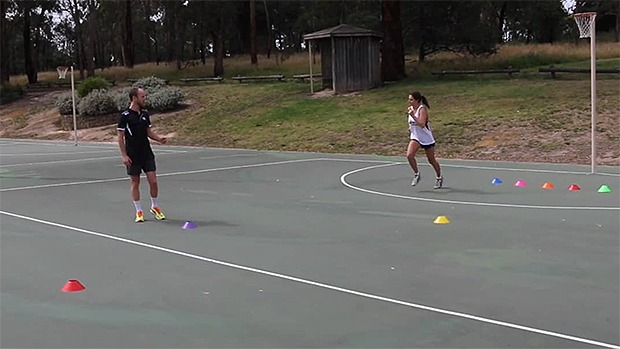
For more experienced teams, you might like to continue the fitness theme with a challenging cone course or circuit that also includes ball skills, or you may wish to have the players working in pairs for some short, sharp cone and ball drills, or even some position-specific drills (i.e. goaling or defence).
Footwork can also include components like one-on-one defence, which will allow your players to work on their quick feet in a more competitive situation.
STRUCTURES, STRATEGIES AND SPECIALIST – 30 MINUTES
Finally, dedicate the last 30 minutes of your session to learning or working on your team structures, strategies and specialist skills.
Early in the year this will likely include centre passes, defensive throw-ins, sideline throw-ins and long court structures, as your players learn the team’s game plan. It’s best to choose just one area to focus on each week, however, or your players will never be able to remember it all, much less use it in a game.
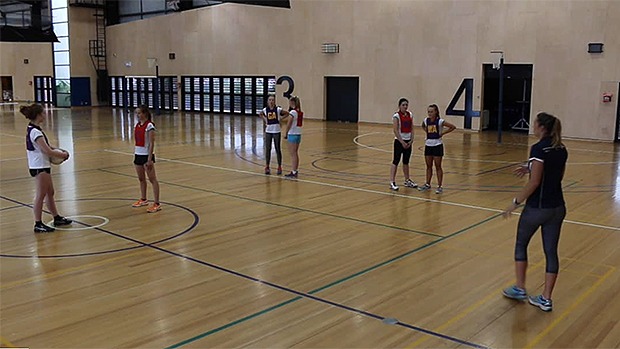
As the season progresses, you can begin to employ position-specific drills and tactics in this 30-minute block. For example, working on your goalers finding and maintain front position, midcourters using preliminary moves to find space around the circle, or defenders dictating their opponent or taking an intercept.
In the final 5-10 minutes, use some long court or matchplay to practice the skills learned throughout session. If you’ve practised defensive throw-ins, take all of your team’s centre passes as defensive throw-ins, and ask your players to ensure they’re remembering to set something up each time, and not revert back to running wherever they like. If you’ve worked on the accuracy of your WA/C feeds into the goalers, remind them that’s their focus, and count the number of good feeds versus feed that miss the mark.
Finally, after a quick warm down, bring your players together one last time and go over the main points from the session. Even better – ask the players to tell YOU what the main points were, and then ask them again before their warm-up on match night.

